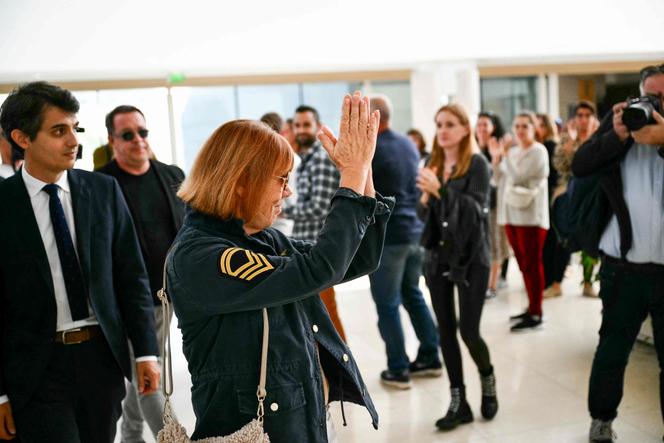


The guard of honor forms again every morning in the court's entrance hall. Shortly before 9am, escorted by her two lawyers, Gisèle Pelicot enters the Avignon courthouse in southern France and crosses the vast hall to the courtroom to the applause of dozens of people. The first standing ovation was on Tuesday, September 17, the day her ex-husband Dominique Pelicot went on the stand, and the scene, rare if not unheard of in a courtroom, reoccurs at every recess, noon and evening.
Occasionally, a cry echoes: "We're with you, Gisèle!" Behind her smoked glasses, Gisèle Pelicot flashes a discreet smile and repeats "thank you," hand on heart. On Thursday, a young woman burst into tears as she passed by. The previous week, an old man had stepped out of the line-up to present her with a bouquet of flowers. Three more bouquets have since been sent to the courthouse.
In the street, Gisèle Pelicot receives encouragement from passers-by, and cars honk at her. Has she seen, in an alley next to the courthouse, the latest of the 15 or so street collages put up across Avignon by feminist collectives? "They said she was broken, but she's a fighter, Gisèle." Since it opened on September 2, the Mazan rape trial, named after the name of the small southern French town where Gisèle Pelicot was raped for years by her then-husband and other men he invited to rape her while she was heavily sedated, has spilled out of the Salle Voltaire − the largest room in the Avignon courthouse, too small for an event like this − and is surrounded by an unusual atmosphere.
Of the 51 defendants the victim faces from the corner she sits in, only 32 are free to come and go. They can be found in the courthouse toilets or on the terrace of the neighboring café, whose owner complains because they scare away customers. During the first few days, Gisèle Pelicot herself found herself in the middle of these men in the queue at the security gate, but she didn't crumble. She has since been given a pass.
The courtroom is closed to the public, who watch the proceedings from an adjoining broadcast room. Sixty people can be seated there, but twice that number queue up every day to get in − the vast majority of them women. It's these spectators who applaud the victim, an often boo the accused.
For two weeks, tensions ran high, and the historic trial turned into a frenzy. Very early on, the defendants' names, which had not been mentioned in the press out of respect for their family and friends, began to appear on social media after they were listed on the roll, a document accessible to all, at the entrance to the courtroom.
You have 42.53% of this article left to read. The rest is for subscribers only.
